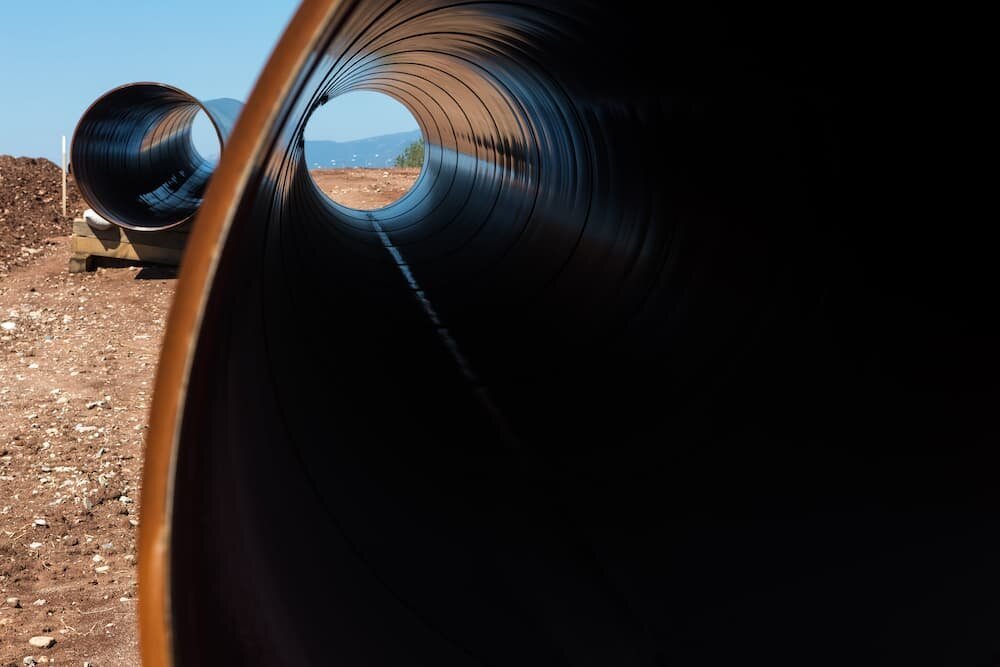
Pipeline Pre-Commissioning
Before you can commission a newly constructed pipeline, it must be examined to ensure it can transport products safely. This testing, known as pipeline pre-commissioning, examines the new pipeline’s integrity, cleanliness and other operational factors.
Not only is it important to test your pipeline but it is also required by Pipeline & Hazardous Materials Safety Administration. To transition from pipeline construction to operation, the pre-commissioning process must be done properly.
Keep reading to learn about American Pipeline Solutions’ pre-commissioning process, when this process should occur and the types of pipes that are tested.
American Pipeline Solutions’ Pipeline Pre-Commissioning Process
The first step in pre-commissioning is to clean the pipeline of any construction debris. Cleaning the pipeline is achieved by pigging the pipeline.
After the pipeline is clear of debris, APS’ team measures the internal diameter of the pipeline. To measure the internal diameter of a pipeline, APS uses a caliper tool or caliper pig tool. Using mechanical fingers or arms, the caliper tool can record the pipeline’s internal structure as it is run through the pipeline.
Now that the pipeline has been pigged and measured, it is ready for pipeline integrity testing. APS uses pipeline integrity testing to detect any anomalies in your pipeline’s structural integrity, such as leaks.
An example of an integrity test that is used on newly constructed pipelines is hydrostatic testing. Hydrostatic testing is used to determine if your pipeline’s pressure level is maintained over a specified amount of time.
Next, APS will fill and stabilize your pipeline in preparation for testing. APS’ team uses a fill pig tool propelled by a column of test water when filling your pipeline. This eliminates any air within the pipeline.
After filling the pipeline, it must be stabilized. This is done by pressuring the pipeline to around 200psi. Once the pipeline’s temperature and pressure are equalized, it is ready for testing.
When testing is complete, the pipeline is dewatered and dried. APS carefully monitors the pig as it runs through the pipeline back to the launch site using compressed air. To dry the pipeline, APS uses a series of soft foam swabs and cleaning pigs. Finally, the pipeline is brought to a -40° dew point using oil-free compressors and desiccant dryers.
What Pipelines Need Pre-Commissioning?
Pipeline pre-commissioning is a process that is commonly used for new pipelines constructed by a utility provider. One example of a type of utility provider that utilizes pipeline pre-commissioning is a gas utility provider. When taking over ownership of a pipeline from a contractor, the utility provider must perform pre-commissioning testing before bringing the pipeline live.
APS has experience in providing all pre-commissioning services for various types of pipeline systems, including:
Newly built or constructed pipelines
New gas pipeline systems
New water and wastewater pipeline systems
Natural gas pipeline systems
Newly installed pipelines for academic campuses
This is by no means an exhaustive list of the types of pipeline systems that can receive pre-commissioning testing. Customers are welcome to contact the APS team to determine the best pre-commissioning testing process for your needs.
Does your newly constructed pipeline need pipeline pre-commissioning testing?
Contact American Pipeline Solutions’ expert team to receive a timely and cost-effective solution today.







